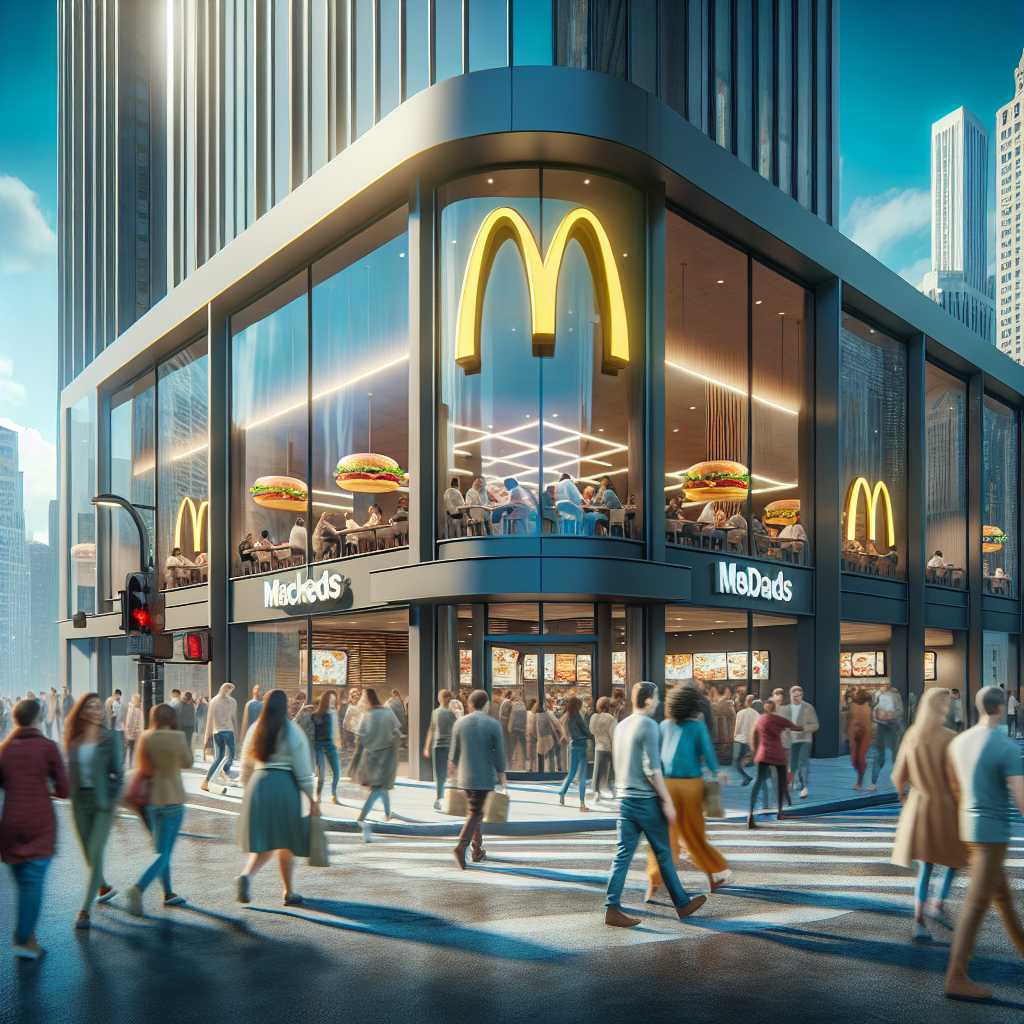The Comprehensive Guide to McDonald’s: From Humble Beginnings to Global Dominance
McDonald’s is arguably the most recognizable fast-food chain in the world. With its iconic Golden Arches, Ronald McDonald mascot, and Big Macs, the company has left an indelible mark on global food culture. In this comprehensive guide, we delve into the origins of McDonald’s, its business model expansion over the years, cultural impact, and current standing in the global market.
The Origins and Historical Development of McDonald’s
The McDonald Brothers and Ray Kroc
The origins of McDonald’s can be traced back to 1940 when brothers Richard and Maurice McDonald opened a restaurant in San Bernardino, California. Originally a barbecue drive-in, they reinvented it in 1948 using their Speedee Service System featuring a limited menu focusing on a few items such as hamburgers, cheeseburgers, fries, shakes, soft drinks, and apple pie.
In 1955, Ray Kroc, a milkshake mixer salesman, discovered the efficiency of the McDonald brothers’ operation and saw potential in franchising the concept. He opened the first franchise east of the Mississippi River in Des Plaines, Illinois, which marked the beginning of McDonald’s rapid expansion.
Paving the Way for Franchise Growth
Kroc’s vision was to maintain a standardized set of products throughout all locations, ensuring consistency and predictability for customers wherever they went. By 1965, McDonald’s had sold its 700 millionth hamburger and continued its explosive growth nationally.
Golden Arches Go Global
The introduction of Ronald McDonald as a brand mascot in 1963 and expansion abroad with its first international restaurant in Canada in 1967 signified that McDonald’s was set for global success. By the end of the 1970s, there were more than 1,000 McDonald’s restaurants worldwide.
The Business Model: Innovation and Adaptation
Franchising as a Growth Strategy
McDonald’s main growth vehicle has been its franchise model. It allows for scalability by licensing its brand to franchisees, who then also receive support in terms of training, operations standards, and marketing. This has created a consistent yet locally adaptable global fast-food empire.
Innovating Customer Experience
To keep up with changing consumer expectations and technology, McDonald’s has continually innovated its customer service model. It has introduced drive-thru service starting in 1975 in Sierra Vista, Arizona, which has now become an industry standard.
Menu Diversification and Local Adaptation
McDonald’s not only offers standard menu items globally but also adapts its offerings regionally. The McVeggie in India or McArabia in Middle Eastern countries provide cultural adaptation with a McDonald’s twist.
Technological Integration and Sustainability Efforts
More recently, McDonald’s has integrated technology like self-service kiosks and mobile apps while focusing on sustainability initiatives to reduce its environmental impact through more sustainable packaging and supply chain practices.
Cultural Impact and Criticisms
Brand Cultural Influence
McDonald’s has left a significant imprint on global culture. Terms like ‘McJob’ and ‘McMansion’ exhibit the brand’s entry into everyday language. Its presence in movies, television shows, and even foreign policy discussions – sometimes referred to as “McDonaldization” – demonstrates its extensive cultural reach.
Nutritional Criticism and Societal Concerns
However, with massive success came criticism related to public health issues due to fast food’s nutritional content leading to obesity and other health problems. Campaigns such as “Supersize Me” brought attention to these concerns.
Environmentalists have also attacked McDonald’s practices regarding immense waste production and harmful environmental impacts due to beef farming among others.
Current Standing in the Global Market
Pandemic Challenges and Adaptations
In responding to COVID-19 restrictions starting early 2020, McDonald’s pivoted by emphasizing delivery options through platforms like UberEats and capitalizing on its drive-thru operations for contactless ordering and pick-up.
Emerging Trends and Managing Competition
With the rise of plant-based options entering mainstream diets, McDonald’s has developed products like “McPlant” burgers to stay relevant. In facing increasing competition from “better burger” concepts like Five Guys or Shake Shack, it continues innovating menu offerings to retain market share.
McDonald’s maintains resilience due to robust branding but must jostle within an evolving food service landscape with rising consumer health consciousness.
Financial standing: Brand Power Preserved
As of early 2021 figures, McDonald’s Corporation showcases continued strength with over 38,000 locations across more than 100 countries — embodying triumph through adaptability and brand power despite socio-economic challenges.
Notes
OYvdq

